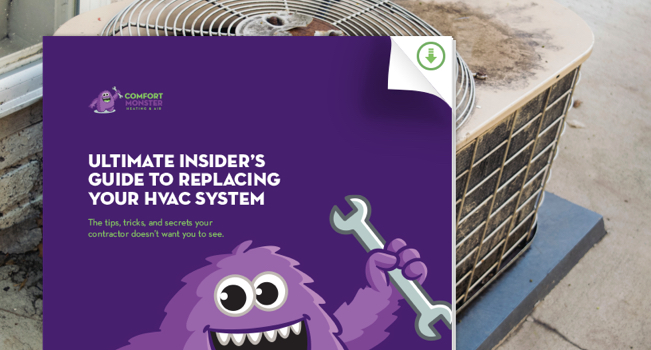Read on to learn about what we can test for and improve when we come to check out your home’s air quality.

Can you believe the EPA thinks the air is worse in your home than out in the street? We can — modern homes are like a sealed plastic bag. The more energy efficient a structure is, the less it can “breathe”. Picture an old log cabin. Do you think it was very energy efficient? Comfortable? Heck no, but plenty of fresh air got in and out. As construction has evolved, structures have been made tighter and tighter, and more and more nasty stuff is used in construction of your home and furniture (wood treatment, hardwood finishes, paint, etc). We also spend more time inside our homes these days as many people work from home full-time or part-time and then spend our leisure time at home in front of screens.
But even if you’re only there to sleep, that adds up to a lot of time to be breathing bad air – So find out today what you can do to maintain healthy air in your home.
Read on to learn about what we can test for and improve when we come to check out your home’s air quality.

Just adding a UV light or some other contraption to your home won’t give you healthy air. You need someone with experience to look at your home and analyze your environment to make good recommendations for your health and peace of mind.

Let’s not jump right to worrying (take a nice, slow, deep breath…). But over time it would definitely be better to know exactly what you’re breathing and get some help to make your air as healthy as possible.
I think we know how this works. As you breathe, you are inhaling oxygen (well really a mixture of oxygen, nitrogen and other things) and exhaling carbon dioxide (CO2). When homes were constructed less “tightly”, they would breathe easily, and carbon dioxide was nothing at all to worry about. As it is, most homes are still okay, especially when you are opening doors frequently while coming and going, but we do occasionally see issues with higher carbon dioxide concentrations in newer homes.
Installing a fresh-air intake is a great way to get fresh outdoor air into your home. The setup and installation are important, however. You can choose when to bring fresh air in (ideally when it isn’t counterproductive to heating or cooling) and filter it to avoid dust and allergens.
Volatile organic compounds (or VOC’s) such as formaldehyde are released from air fresheners, varnishes, paints, carpets, and a variety of other things in your home. Concentrations will be higher when you have new furniture, new floors, and other manufactured things in your house, but it’s always good to periodically monitor VOC’s, especially in living areas for kids or babies.
VOC’s can be neutralized and removed from your air as it passes through your HVAC system. Like anything else, selecting the right products, proper design and installation will maximize the effectiveness of the system.
Potential allergens are always present in the air, but they can increase with seasonal changes as well as the presence of pets in the home. Allergens can be filtered by mechanical means, but choosing the right filtering mechanism for your HVAC system can ensure proper performance without putting extra strain on it. Additionally, mechanical filters can be supplemented by electronic solutions that help to catch a higher percentage of allergens with less air restriction.
There are many different ways that odors can increase in a home. One example is something referred to as “dirty sock” syndrome. It’s reasonably common in heat pump installations and is caused by the growth and re-hydration of a biological. The most common odors are caused by pets, cooking, or other external factors introduced into the home. Odors can also be filtered effectively by mechanical means, and odor filtration can be enhanced with electronic solutions. Most people are not aware of odors in their own homes, so outside experts can be helpful in identifying them.
It’s most important, of course, to find the source of anything biological and eliminate it first, but when it comes to airborne germs such as colds and flu viruses, the less they circulate around your home the better. In a home without any type of bio filtering or purification, airborne biologicals are continually recirculated around your home. A professional solution will kill and capture these microbes, reducing the amount of harmful biologicals in your air so you can breathe easy. There’s no guarantee that you can prevent one family member passing illness on to another, but a well-designed solution can certainly help.

Read everything you need to know about buying a new HVAC system.
Download